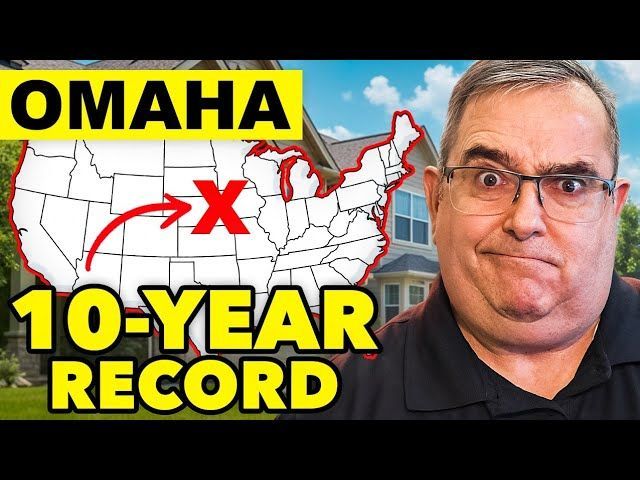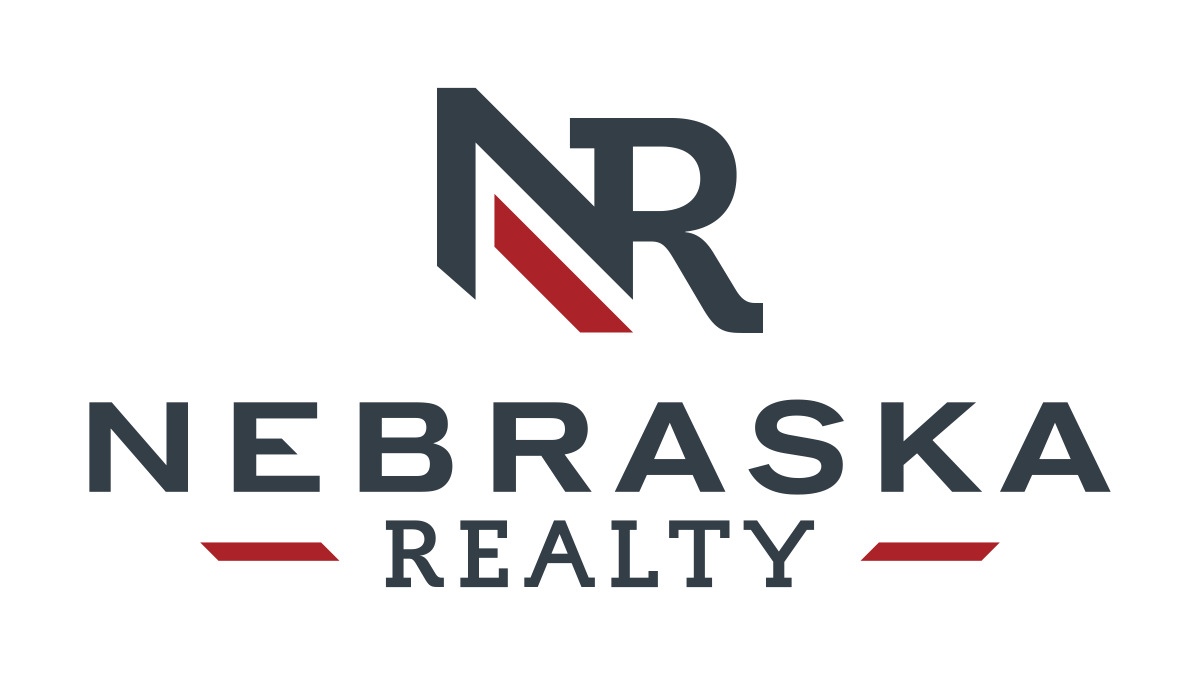Omaha Appraisal: What Appraisers Are Really Seeing in 2025
Welcome. If you want an honest, boots-on-the-ground look at the Omaha Appraisal world in 2025, you are in the right place. I sat down with a local appraiser, Nate Wohlenhaus, and have been out in the field long enough to share specifics: how appraisals work, what appraisers document, common deal-breakers, and what sellers and buyers should do before the appraiser arrives. Whether you are preparing to sell, buy, refinance, or just curious about how a Nebraska appraisal functions, this guide will walk you through everything I learned and everything I recommend.
Table of Contents
- Why the Omaha Appraisal matters right now
- Who becomes an appraiser and why it matters for your transaction
- The appraisal ordering process: timing and what appraisers see before they arrive
- How long is an appraisal report and how much time does an appraiser spend?
- On-site inspections: what appraisers look for
- FHA, USDA, VA vs conventional loans: different thresholds and requirements
- Top things that cause delays or callouts on an Omaha Appraisal
- Surveys and easements: when appraisers will request more documentation
- How appraisers use comparable sales and market acceptance
- Dealing with a low appraisal: reconsideration of value
- Which improvements add value and which do not
- Cost approach and income approach: when appraisers use them
- Short-term rentals, insurance, and value complications
- Refinances, tax appeals, estates, and divorces: other reasons for appraisals
- Permits, DIY remodels, and insurance pitfalls
- Where Omaha stands in 2025: are we crashing or stabilizing?
- Seller preparation checklist to improve your Omaha Appraisal outcome
- Final thoughts and practical tips
- Frequently Asked Questions
- Closing: your Omaha Appraisal should be predictable
Why the Omaha Appraisal matters right now
An Omaha Appraisal can literally make or break a deal. Because the appraisal establishes the lender’s view of market value, it directly affects the loan amount, the buyer’s required down payment, and whether the underwriting team will approve the mortgage as written — so a low number creates immediate pressure on everyone involved. When an appraisal comes in below contract price the options are limited and time‑sensitive: the buyer can bring more cash to the table, the seller can reduce the price or offer a seller credit, the parties can negotiate repairs or concessions, or the buyer can pursue a formal reconsideration of value with additional comparable sales. Some loans (FHA, USDA, VA) will also require certain safety or health corrections to be completed before funding, while conventional lenders may accept escrowed repairs or contractor estimates in some cases. That tug‑of‑war often delays closing — sometimes only a few days for a quick reinspection, other times weeks if new comps must be gathered or repair work scheduled — and missed contingency deadlines can force difficult choices. The best defense is preparation: document improvements and permits, provide a clear packet to the appraiser, and have a plan for how you’ll respond if value and contract diverge so negotiations happen fast and with facts instead of emotions.
Who becomes an appraiser and why it matters for your transaction
Becoming a certified appraiser is not easy. Since 2008 the standards ramped up: you now need the equivalent of a college degree plus specialized appraisal coursework and at least 1,500 supervised experience hours over a two-year period for a residential certification. Appraisers follow national credentialing standards and the Uniform Standards of Professional Appraisal Practice.
Why does that matter to you? Because an Omaha Appraisal performed by a seasoned, credentialed appraiser brings independence and technical rigor to the transaction. There are fewer corners cut, stricter measurement standards, and a professional obligation to report objectively.
The appraisal ordering process: timing and what appraisers see before they arrive
Most appraisals are ordered electronically by lenders through third-party platforms or appraisal management companies. Once a purchase contract is submitted, the lender orders the appraisal. Turnaround varies by lender workload, but in many cases appraisers see the order quickly.
- Appraisal platform receives contract and supporting documents.
- Order assigned to a local appraiser with appropriate credentials.
- Appraiser pulls the MLS docs, seller disclosure, and contract before inspection.
When an appraiser like me receives an order, I pull the MLS listing, seller disclosure, and any pre-inspection reports. That packet often tells me things I will verify on site: updates, concessions, and unique property features. If there are documented questions—like easements or boundary concerns—I will condition the appraisal on a survey if necessary.
How long is an appraisal report and how much time does an appraiser spend?
The physical Uniform Residential Appraisal Report (URAR) is six pages, but the full appraisal package usually runs 15 to 20 pages once photos, maps, certifications, and addenda are included. A typical three-bedroom, two-bath single family appraisal usually consumes between five and eight hours total from start to finish. On-site inspection is often only 30 minutes for a standard home.
That time includes:
- Pre-inspection research (MLS, ownership records, prior sales)
- On-site measuring, photos, condition assessment
- Comparable selection, adjustments, and report writing
- Upload and delivery to lender, and any follow-up
On-site inspections: what appraisers look for
There is more to an Omaha Appraisal than exterior photos and square footage. For conventional loans, inspections are typically exterior only. For FHA and USDA loans, appraisers perform more thorough interior observations. That can include poking into attics, examining crawl spaces, and checking safety items such as handrails or evidence of water infiltration.
Common on-site checks include:
- Gross living area measured to ANSI standards
- Roof condition and estimated remaining life
- Evidence of deferred maintenance and water intrusion
- Safety items like railings, steps, and broken concrete
- Signs of pests, animal infestations, or hazardous items like buried oil tanks
Attics and bats: more common than you might think
On FHA and USDA appraisals we must at least observe attics. That small observation can uncover serious issues—bats, guano contamination, or mold. Bats are a real issue. They are protected in many cases and removal can be expensive. Typical remediation may require specialized exclusion devices and attic decontamination, costing several thousand dollars. An Omaha Appraisal that finds animal infestation will list the deficiencies and may require remediation before loan approval.
FHA, USDA, VA vs conventional loans: different thresholds and requirements
Not all appraisals are created equal. FHA, USDA, and VA appraisals are geared toward minimum property standards and borrower safety. They will flag items as required corrections if they pose safety, health, or structural concerns. Common FHA/USDA callouts include peeling lead-based paint for homes built before 1978, missing handrails, unsafe stairs, serious roof deterioration, and foundation issues. Conventional appraisals may note the same issues but often leave final judgment to the underwriter or require a roof inspection rather than immediate replacement.
Top things that cause delays or callouts on an Omaha Appraisal
Certain issues commonly delay closings or require seller repairs:
- Peeling paint on older homes (lead-based paint concerns before 1978)
- Missing or unsafe handrails and steps
- Roof with less than two years of remaining life or significant missing shingles
- Evidence of water intrusion or structural cracks
- Undisclosed oil tanks or hazardous material
- Animal infestations and attic contamination
- Encroachments, easement disputes, or boundary uncertainties
When any of the above are present, we document, estimate remediation, and often condition the appraisal on repairs or a contractor’s estimate. For FHA and USDA loans, repairs that affect safety must often be completed and re-inspected before final loan approval.
Surveys and easements: when appraisers will request more documentation
If boundaries or easements are in question, an Omaha Appraisal will note those concerns and may be conditioned on a survey. Easements can profoundly affect value—especially if they limit access to building areas or create practical barriers to construction. Rural properties often have easement questions that require clarification before value can be finalized.
How appraisers use comparable sales and market acceptance
The residential side of valuation is built on the sales comparison approach. Appraisers select comps that are the most similar in location, size, condition, and age. But we do not only look at sold properties. Days on market and listing history matter. A home that sold in three days may indicate multiple offers and strong demand; a home that sat for months signals overpricing or issues. I always look at local market behavior by price band. For example, entry-level homes will often sell faster than high-end or overbuilt subdivisions.
When I do an Omaha Appraisal I ask: Are the comps recent? Are they in the same price band? Was a sale an outlier due to a motivated seller or unique circumstance? This analysis helps me place a defensible, market-derived value.
Dealing with a low appraisal: reconsideration of value
If a home does not appraise at the contract price, there is a formal process: a reconsideration of value. The buyer works with the lender to submit additional comparable sales and a reasoned argument to the appraiser. Appraisers review those submissions and either incorporate valid comps or explain why they were not appropriate.
Here are tips to improve success on a reconsideration:
- Provide comparable sales that are within the same market band and timeframe
- Include data that shows similarity in condition and features
- List documented updates and seller-provided improvement records
- Avoid emotional pleas; focus on objective, verifiable data
An Omaha Appraisal can sometimes be revised upwards if the comps are convincing and clearly comparable. Too often folks only complain about a value without providing supporting sales, and that limits the reconsideration's effectiveness.
Which improvements add value and which do not
Understanding how improvements affect an Omaha Appraisal is critical to making wise seller decisions. Not all upgrades return their cost at sale.
Improvements that tend to help
- Fresh paint and neutral color schemes that improve perceived condition
- Updated flooring, especially durable, mid-range options
- Kitchen and bathroom updates when done well and in line with neighborhood standards
- New mechanicals that buyers expect (furnace, water heater, AC) often help sell faster
Improvements that rarely add full value
- High-end, expensive pools that may be viewed as liabilities
- Non-permitted additions and enclosed patios that are not counted as gross living area
- Overly customized or eclectic remodels that do not match neighborhood expectations
- Decorative window treatments and most cosmetic-only finishes
Remember: condition ratings matter. Appraisers use a condition scale from brand new to poor. A jump in condition improves comparability to higher-value sales, but the dollars you spend are only partially captured in appraised value.
Cost approach and income approach: when appraisers use them
An Omaha Appraisal will typically rely on the sales comparison approach for single-family homes. The cost approach estimates what it would cost to rebuild a structure new, then subtracts depreciation. It becomes more relevant for unique or very high-end properties where comparable sales are scarce.
The income approach is used primarily for rental properties and multifamily units. For single-family homes, the income approach is only useful if the property is genuinely being valued as an investment with long-term rental income. Short-term rental income from VBOs or Airbnbs is treated differently and generally is not used in a traditional income capitalization approach for residential appraisal.
Short-term rentals, insurance, and value complications
VBOs and Airbnbs introduce problems for an Omaha Appraisal. Insurance companies view short-term rentals as higher risk; premiums can jump dramatically. Also, short-term income streams are volatile and are not treated the same as long-term rental income in appraisals. If a property is being valued as a going concern for a hospitality business, that requires a separate valuation approach.
Refinances, tax appeals, estates, and divorces: other reasons for appraisals
Appraisals are not just for purchases. Refinance loans commonly require appraisals, and lenders sometimes order exterior-only or hybrid appraisals based on loan-to-value thresholds. Appraisers also perform valuations for tax protests when county mass appraisals seem out of line. Estate work and divorce valuations are other common requests where independent value opinions are essential.
Permits, DIY remodels, and insurance pitfalls
Non-permitted work can create major issues. If a seller remodeled without permits and the work is discovered, an Omaha Appraisal may note the lack of permits, and that work may not be treated as legitimate gross living area or value-added. Insurance companies may deny claims if non-permitted work contributed to a loss, and buyers can face significant liabilities. When in doubt, get permits and proper inspections for any structural or system upgrades.
Where Omaha stands in 2025: are we crashing or stabilizing?
Short answer: stabilizing. There are sectors of the market that are softer than the pandemic peak, but a broad crash is unlikely. Here is why:
- Population growth and job additions keep demand steady in the metro.
- Inventory has increased from the lowest COVID levels but in many price bands is near pre-COVID norms.
- Mortgage rates are likely to stay relatively stable; buyers and lenders have adapted to higher rates.
- Some overbuilt segments, especially certain price points and new construction bands, are softer and will see price adjustments.
An Omaha Appraisal today reflects a market that is normalizing rather than collapsing. Real estate remains local; regional economic strength and employment stability make a crash less likely here than in areas that suffer major industry loss.
Seller preparation checklist to improve your Omaha Appraisal outcome
If you are selling, do these things before the appraiser arrives:
- Compile a list of updates, with dates and receipts where possible
- Provide a packet for the appraiser: MLS flyer, seller disclosure, any inspection reports
- Fix obvious safety issues: handrails, broken steps, trip hazards
- Power wash and touch up exterior paint where it is peeling
- Service mechanicals: football cleaned, AC and furnace serviced—buyers expect working systems
- Clean, declutter, and make the home easy to inspect and measure
- Pull permits records for any remodels and include them in the packet
These steps help an appraiser accurately represent your property in an Omaha Appraisal and reduce the chance of a low or delayed appraisal.
Final thoughts and practical tips
Understand that appraisers are ballpark estimators using rigorous methods. They do not pick an arbitrary number; they rely on recent, comparable sales, condition ratings, and market behavior. The buyer, lender, or underwriter will decide final acceptance, but a strong, well-documented Omaha Appraisal is your best defense in a contested valuation.
My biggest pieces of advice:
- Be proactive. Fix safety issues and document improvements before listing.
- Give your appraiser as much credible information as possible—improvements, permits, and recent comparable sales.
- Educate buyers: touring multiple homes teaches them the market and prevents missed opportunities.
- If your appraisal is low, use the formal reconsideration process with data, not emotion.
Frequently Asked Questions
What is the typical length and format of an Omaha Appraisal report?
The main Uniform Residential Appraisal Report is six pages; the full Omaha Appraisal package usually runs 15 to 20 pages once photos, market analysis, maps, and addenda are included.
How long does an appraiser spend on a standard single-family appraisal?
Expect five to eight hours of total time for a typical three-bedroom, two-bath appraisal. On-site inspection is often 30 minutes for a standard home; the remainder is research and report writing.
Do appraisers check attics and crawl spaces?
For FHA and USDA loans, appraisers perform interior observations including attics and crawl spaces. For conventional loans, interior checks vary and are often not required unless specified by the lender.
What are the common FHA or USDA callouts that sellers should fix before listing?
Peeling paint (especially pre-1978 concerns), missing handrails, serious roof issues, unsafe steps or walkways, and evidence of structural water damage are common callouts that must be addressed for FHA and USDA loans.
Can an appraisal be changed if the buyer thinks it is too low?
Yes. The buyer can request a reconsideration of value through the lender by submitting additional comparable sales and supporting data. The appraiser reviews the submission and may revise the report if the comps are appropriate.
Will a pool add value in an Omaha Appraisal?
Pools are often a liability and do not typically add equivalent value to their cost. In many markets, including Omaha, pools may reduce buyer pool or require price adjustments due to maintenance and safety concerns.
Are solar panels considered in value during an Omaha Appraisal?
Solar panels complicate valuation. Considerations include ownership vs lease, life expectancy, and regional market acceptance. There is limited comparable data, so adjustments are challenging and handled case-by-case.
When is the cost approach used?
The cost approach is useful for unique or high-end properties where comparable sales are scarce. It estimates replacement cost less depreciation plus land value and is often supplemental to the sales comparison approach.
Do appraisers use short-term rental income for valuation?
No. Short-term rental income from services like Airbnb or VBO is not typically used in the income approach for a standard residential Omaha Appraisal. Long-term rental income is used for income-based valuations.
What should a seller include in the appraisal packet?
Include the MLS flyer, seller disclosure, signed purchase contract, lists of improvements with dates and receipts, permit documents for remodels, and any inspection reports. This helps the appraiser accurately reflect the property’s condition and features.
What’s the best way to avoid appraisal delays?
Take care of obvious safety and maintenance issues before listing, gather documentation and receipts for improvements, disclose any potential red flags like oil tanks or animal infestations, and make the home easy to access and measure.
Is the Omaha market crashing?
No. The market is normalizing after pandemic extremes. There are soft pockets, especially in certain new construction price bands, but overall demand and population growth support stable values rather than a crash.
How do days on market affect an Omaha Appraisal?
Days on market is a signal of market acceptance. Rapid sales with multiple offers often support higher values. Properties that sit and need multiple price reductions typically reflect weaker market demand and affect comparable analysis.
Closing: your Omaha Appraisal should be predictable
My goal in writing this is simple: make the appraisal process less mysterious and more actionable. The Omaha Appraisal is a professional opinion grounded in data, but it is also shaped by how well a property is presented and documented. Sellers who prepare, document, and address safety items increase their odds of a smooth appraisal. Buyers who tour widely gain market context and spot correctly priced properties. Appraisers are the neutral third party bringing rigor to what otherwise can be an emotional, high-stakes transaction.
Thanks for reading. If you are preparing a house for sale or have specific questions about what could affect your Omaha Appraisal, reach out to local professionals and assemble your documentation early. Good preparation leads to fewer surprises and faster closings.
DAVID MATNEY
David Matney is a trusted Realtor® and local expert with over 20 years of experience in Omaha’s real estate market.













